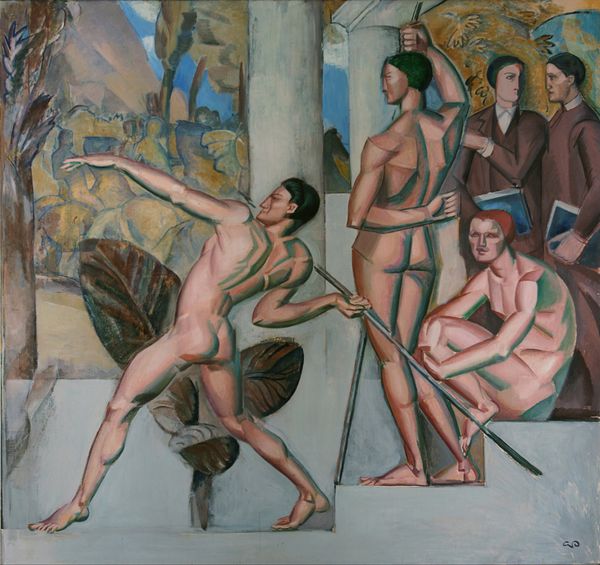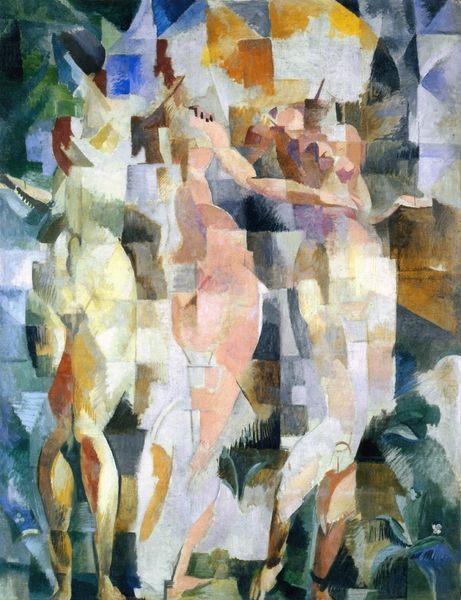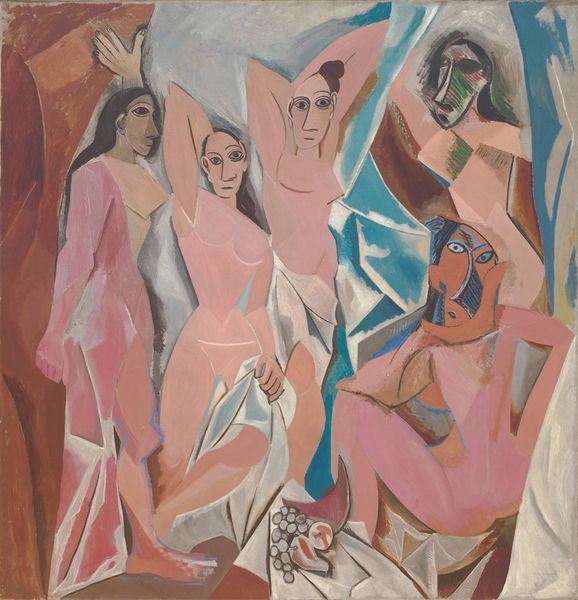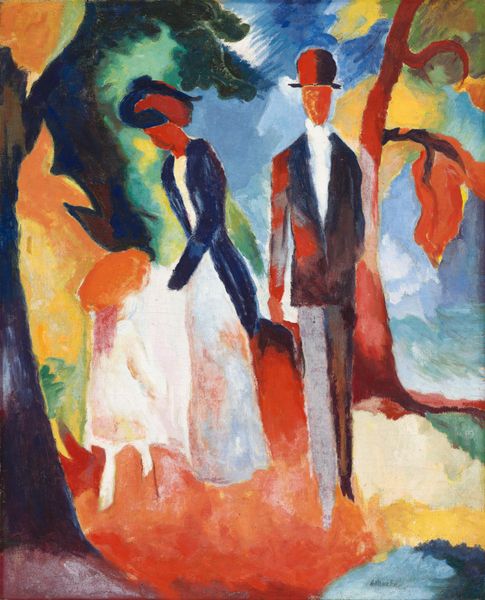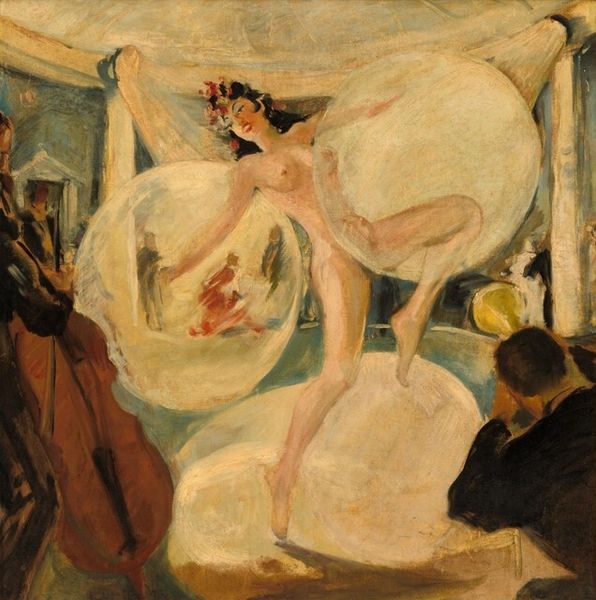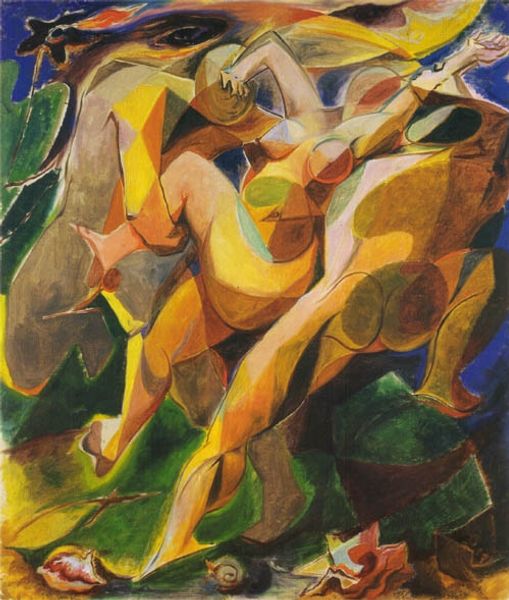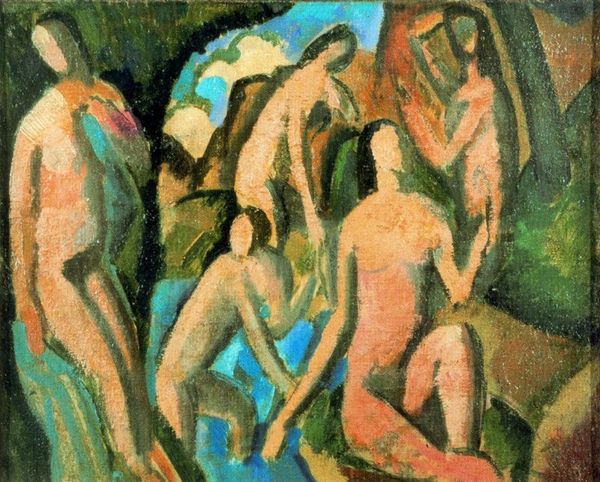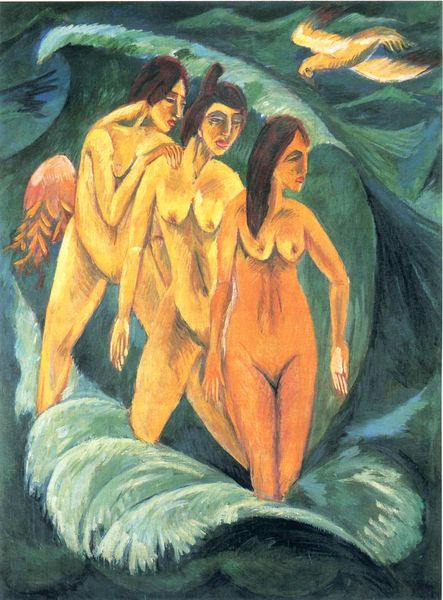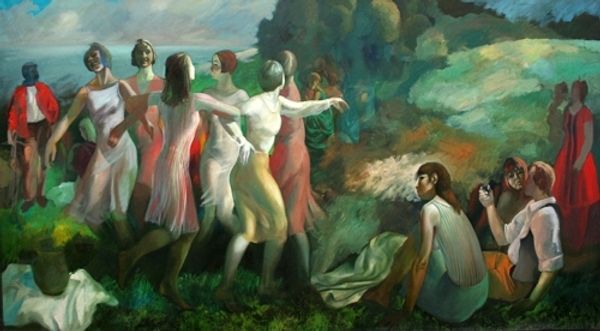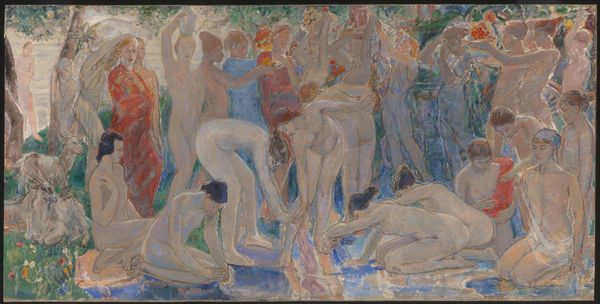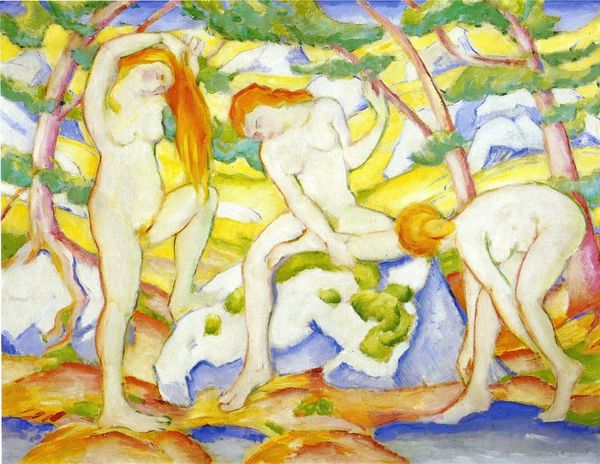
painting, oil-paint
#
art-nouveau
#
abstract painting
#
painting
#
oil-paint
#
landscape
#
figuration
#
oil painting
#
group-portraits
#
expressionism
#
abstraction
#
painting art
#
modernism
#
expressionist
Copyright: Public domain
Art Historian: Here we have Alice Bailly's "Beauties' Fancy," painted in 1918. It's an oil on canvas piece that offers a fascinating glimpse into the artistic currents of the time. Artist: My first thought? It’s like a dream dipped in art deco—or maybe art nouveau. I love the ghostly figures amidst that dappled background; it feels both festive and just slightly melancholic. Art Historian: It's interesting you pick up on that melancholic vibe. 1918, of course, was the end of the First World War and the start of the Spanish Flu pandemic. Bailly, as a Swiss artist, would have been deeply affected by the surrounding turmoil even if neutral. These women could be interpreted as embodying that period of uncertainty and loss, their ethereal forms representing fragility. Artist: Possibly. I see that. But I also feel a sense of joyful liberation in the composition. It’s the war ending perhaps. A celebration in the midst of mourning... The way she abstracts the figures, blurs the line between the landscape and the body. I imagine Bailly wanting to push against constraints, maybe finding freedom in a difficult context? Art Historian: Precisely. Bailly's use of line and color departs from traditional representations, and in her blending of bodies with landscapes we find an innovative method. It's difficult to assume meaning, but we know that, around this time, alongside her painting, Bailly pioneered "Wollbilder"— yarn paintings which integrated craft and art, challenging traditional artistic hierarchies. Artist: It all blends! This feeling in "Beauties' Fancy," the yearning for something, the dance between joy and sorrow. And those birds in the upper part of the composition, it really does it for me... Freedom above their heads as something desired, yearned for. It's just really a feast for the soul. Art Historian: Ultimately, "Beauties' Fancy" represents not only a historical moment but also Bailly’s innovative approach to painting during a transitional period. Artist: I agree; it reminds us to keep dancing, keep creating, keep finding those fleeting moments of beauty.
Comments
No comments
Be the first to comment and join the conversation on the ultimate creative platform.
